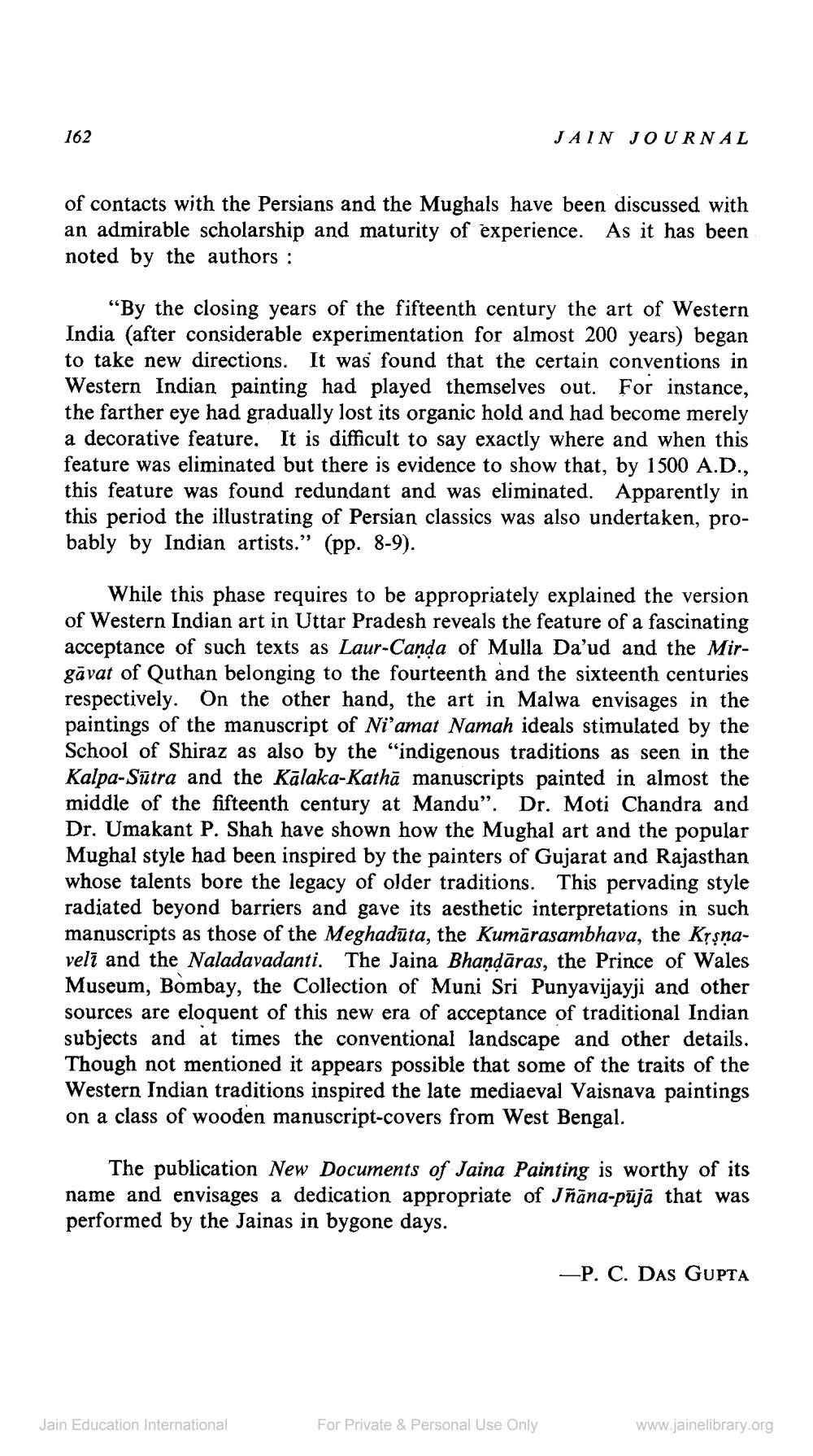Book Title: Jain Journal 1976 04 Author(s): Jain Bhawan Publication Publisher: Jain Bhawan Publication View full book textPage 4
________________ 162 JAIN JOURNAL of contacts with the Persians and the Mughals have been discussed with an admirable scholarship and maturity of experience. As it has been noted by the authors : "By the closing years of the fifteenth century the art of Western India (after considerable experimentation for almost 200 years) began to take new directions. It was found that the certain conventions in Western Indian painting had played themselves out. For instance, the farther eye had gradually lost its organic hold and had become merely a decorative feature. It is difficult to say exactly where and when this feature was eliminated but there is evidence to show that, by 1500 A.D., this feature was found redundant and was eliminated. Apparently in this period the illustrating of Persian classics was also undertaken, probably by Indian artists.” (pp. 8-9). While this phase requires to be appropriately explained the version of Western Indian art in Uttar Pradesh reveals the feature of a fascinating acceptance of such texts as Laur-Canda of Mulla Da'ud and the Mirgāvat of Quthan belonging to the fourteenth and the sixteenth centuries respectively. On the other hand, the art in Malwa envisages in the paintings of the manuscript of Ni'amat Namah ideals stimulated by the School of Shiraz as also by the "indigenous traditions as seen in the Kalpa-Sūtra and the Kālaka-Kathā manuscripts painted in almost the middle of the fifteenth century at Mandu". Dr. Moti Chandra and Dr. Umakant P. Shah have shown how the Mughal art and the popular Mughal style had been inspired by the painters of Gujarat and Rajasthan whose talents bore the legacy of older traditions. This peryading style radiated beyond barriers and gave its aesthetic interpretations in such manuscripts as those of the Meghadūta, the Kumārasambhava, the Kțşnaveli and the Naladavadanti. The Jaina Bhandāras, the Prince of Wales Museum, Bombay, the Collection of Muni Sri Punyavijayji and other sources are eloquent of this new era of acceptance of traditional Indian subjects and at times the conventional landscape and other details. Though not mentioned it appears possible that some of the traits of the Western Indian traditions inspired the late mediaeval Vaisnava paintings on a class of wooden manuscript-covers from West Bengal. The publication New Documents of Jaina Painting is worthy of its name and envisages a dedication appropriate of Iñāna-pūjā that was performed by the Jainas in bygone days. -P. C. Das GUPTA Jain Education International For Private & Personal Use Only www.jainelibrary.orgPage Navigation
1 2 3 4 5 6 7 8 9 10 11 12 13 14 15 16 17 18 19 20 21 22 23 24 25 26 27 28 29 30 31 32 33 34 35 36 37 38 39 40 41 42 ... 55
